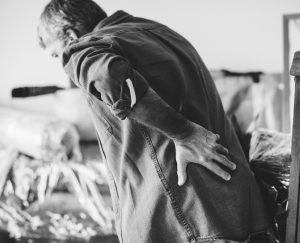
Some estimates indicate that roughly half of the physical decline associated with old age might be due to a lack of physical movement. It’s been suggested that individuals over 50, more than any other age category, need sufficient physical fitness levels to help them sustain health, recuperate from disease and reduce their high risk of illness.
A variety of studies indicate it is never too late to get healthy. The human body reacts to exercise, regardless of its age, and there are lots of health benefits. If you’re over 50, overweight, suffer from a chronic illness or have been sedentary for a while, it’s a fantastic idea to consult your physician prior to embarking on any new exercise regimen.
Getting Older, Getting Weaker
Approximately half of the physical decline associated with aging might be due to a lack of physical action. Without regular exercise, most individuals over 50 may experience a variety of health issues such as:
- Diminished muscle mass, stamina and physical endurance
- Decreased coordination, equilibrium, joint flexibility, freedom, cardiovascular, respiratory function and bone strength
- Increased body fat amounts, blood pressure, susceptibility to mood disorders, such as stress and depression
- Greater risk of different diseases like cardiovascular disease and stroke.

Benefits of Aging
Some of the numerous benefits of regular exercise for elderly people include:
Muscle
The quantity and size of muscle fibres decline with age. Some studies indicate that the ordinary body loses around 3kg of lean muscle each decade out of middle age. The muscle fibres which appear to be affected would be those of their ‘fast twitch’ (phasic) varieties, which regulate strength and contractions. There’s evidence to suggest that these modifications are associated with a sedentary way of life, instead of age. Muscle mass may increase from the elderly person after frequently working out for a rather brief time period.
Bone
Bone density starts to decrease after age 40, yet this loss accelerates throughout your 50s. Weight-bearing exercise, in particular, helps keep bones strong and healthy.
Body Fat Amounts
Carrying an excessive amount of body fat was associated with a range of diseases like cardiovascular disease and diabetes. Frequent exercising even if it is low impact, like clinical pilates, they can assist an elderly individual to maintain a suitable weight for their height and build.
Exercises
Strategies include:
If you’re over 40 decades, overweight, suffer from a chronic illness or have been sedentary for a while, see your physician before you begin a new exercise regimen, they may suggest seeing a physio for shoulder, neck, back or knee pain. You’re more inclined to keep up with a workout regimen if it is enjoyable instead of a chore. Make physical activity a fun social event.
- Safe, simple and comfortable types of exercise include walking, biking and swimming.
- Weight training can improve your muscle mass
- Keep tabs on your progress at a training journal for extra motivation.
- Check your pulse frequently to ensure that you aren’t overdoing it.
- Choose proper clothing and safety equipment.
- Make sure you keep hydrated — drink a lot of water.